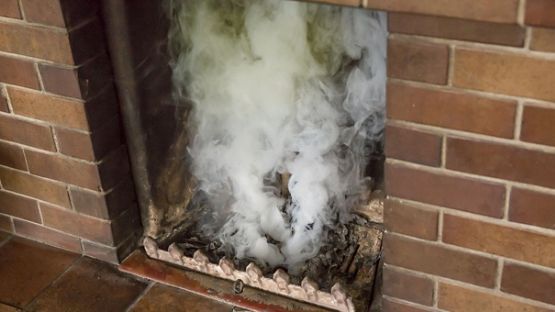Home insurance is one of the most important investments you can make as a homeowner. Homeowners are not required by law to have home insurance. However, many mortgage lenders require borrowers to purchase home insurance and it helps safeguard.
A home insurance policy provides financial protection against a range of potential risks, such as fire, theft and certain types of water damage, offering peace of mind in the event of unforeseen circumstances.
When you purchase home insurance, you may assume it covers any damage or loss that might occur. However, not everything is covered under a standard home insurance policy. Home insurance exclusions are specific scenarios or types of damage that your policy will not cover. Understanding these exclusions is key to ensuring your home is fully protected.
Key takeaways:
- Home insurance is essential for protecting your most valuable asset, even though it's not legally required in Canada. However, understanding what your policy excludes helps avoid unexpected costs.
- Home insurance exclusions typically include predictable or high-risk events like wear and tear, mould and floods. These exclusions mean you’ll need to consider additional coverage options to fully protect your home, where applicable.
- Reviewing your policy regularly is important to ensure adequate coverage. Life changes and home improvements can affect your insurance needs, so make sure your policy reflects your current situation.
What does home insurance cover?
Most home insurance policies provide coverage in case of:
- Physical damage or loss to your home’s interior or exterior
- Physical damage, theft, or loss of personal belongings
- Personal liability or damage or injury to others who visit your home or property
- Accidental damage you cause to someone else’s property
It may also cover additional living expenses, such as a hotel, Airbnb, or other rented accommodation if you can’t live in your home while it’s getting repaired due to a covered claim.
What are home insurance exclusions?
Home insurance exclusions are the conditions or circumstances in which your insurance policy will not pay out. While home insurance generally covers a wide range of potential risks, certain situations or damages are specifically excluded from coverage. You may be able to buy additional (add-on) coverage for some of these exclusions.
Exclusions are often related to high-risk events, predictable damage or situations where separate coverage is required. Knowing what your policy excludes helps you avoid unpleasant surprises when filing a claim and enables you to make informed decisions about any additional coverage you might want to secure.
Eight common home insurance exclusions
It's important to check your policy for what types of things are excluded and confirm with your insurance representative if additional coverage is available and what is right for your needs.
Here are some things that may be excluded from your home insurance coverage:
1. Wear and tear
Home insurance is designed to safeguard you from sudden catastrophic losses. Damages attributed to wear and tear or poor maintenance, such as rust, corrosion, etc., won't be covered under your policy since it's your responsibility to keep up with home repairs and updates.
2. Mould
Mould is usually caused by water damage and, because it's slow-moving and preventable, home insurance doesn't typically cover it. To prevent mould, it's important to stay on top of leaks and perform proper restoration after any water damage. If it does occur, mould should be dealt with by professionals.
3. Water damage
Some water damage, like a burst pipe, may be covered even by a basic insurance policy. However, flooding is typically offered as additional coverage. Add-on insurance extends your protection to cover overland water and sewer backup damage, including those caused by overflowing bodies of freshwater, rainfall, snowmelt and back-up in drainage.
4. Vermin infestations
Vermin infestations, such as those caused by bedbugs, termites and mice, usually result from poor general maintenance and grow worse over time. Proper upkeep can prevent these infestations, so they are usually not covered by home insurance.
5. Earth movement
Damages caused by the shifting of the earth, such as earthquakes, sinkholes, and mudflows, aren't included in basic home insurance policies, but they may be available as add-on coverages. If you live in an earthquake-prone area, you may want to consider purchasing this coverage.
6. Expensive jewellery, luxury products or artwork
Although home insurance usually covers the belongings you have inside your home, there are limitations. Costly items, such as jewellery, designer handbags or artwork, typically require additional coverage. This is because these items have a higher risk of theft and are more expensive to replace.
7. Intentional damage
Intentional damage caused by the homeowner or someone living in the home is not covered by insurance. This exclusion is straightforward: If you or someone else intentionally damages your property, your insurance company will not pay for the repairs. It's important to ensure that any claims you file are for legitimate, accidental damage.
8. Acts of war, terror or nuclear disaster
Standard home insurance policies typically exclude damages caused by acts of war, terrorism or nuclear disasters. These events are considered extreme and high-risk, often leading to damage that can be difficult for insurers to quantify or cover.
While these scenarios are rare, the potential for severe damage makes them a significant exclusion in most policies. If you live in an area that may be more susceptible to these risks, such as near a military base, near a power plant or in a region with a higher threat level, you may want to explore specialized insurance options that offer some level of protection. However, in most cases, these types of events are considered uninsurable, meaning you'll need to be prepared to handle any potential losses on your own.
Beyond exclusions: Insurance policy limits
In addition to exclusions, it's important to understand the limits of your policy. Policy limits are the maximum amount your insurance will pay out for a covered loss. If you need coverage beyond these limits or for an excluded event, you can often add riders or endorsements to your policy. These are additional provisions that provide extra protection, allowing you to customize your coverage to meet your specific needs.
How to protect your home despite insurance exclusions
Even with exclusions, there are proactive steps you can take to ensure your home is as protected as possible:
1. Purchase additional coverage
While your standard home insurance policy may exclude certain risks, such as overland floods or earthquakes, you can often purchase additional coverage to fill these gaps. Specialized coverages (like overland water or earthquake insurance) are designed to protect against specific risks that are not covered by a typical policy.
By investing in these additional coverages, you can ensure that your home is protected from a broader range of potential hazards. It's especially important to assess your geographic area and consider the likelihood of such events when deciding on extra coverage.
2. Stay on top of home maintenance and safety
As we’ve seen, insurance is meant to cover sudden and accidental damage, not problems that arise due to neglect. So, staying on top of regular home maintenance can prevent many issues that are commonly excluded from insurance coverage.
For example:
- Routinely check and repair your roof, plumbing and foundation. This can help prevent leaks, mould and structural damage.
- Regular gutter cleaning, mould inspection and addressing minor issues before they escalate can save you from costly repairs that your insurance policy won’t cover.
By maintaining your home, you not only maintain your investment, you also reduce the risk of damage that may otherwise be excluded from your policy.
3. Review your policy
Your home insurance needs may change over time. That’s why it’s important to regularly review your insurance policy and make updates as necessary. Life changes, such as home renovations, purchasing high-value items or even getting a new pet, can all impact your coverage needs.
When renewing a home insurance policy, it's important to think about how much coverage you'll need. One of the ways to do this is to assess the value of your home. If you're wondering how insurance companies determine the replacement value of a home or how to find out the risk level of your property, speak with your insurance representative. They'll have the tools and information to make these estimates.
Reviewing your policy annually—or whenever you make significant changes to your home or lifestyle—ensures that you remain adequately covered and aware of any exclusions or changes to your coverage.
For more information on the right homeowners insurance policy for your property and to learn more about home insurance costs, visit our website:













